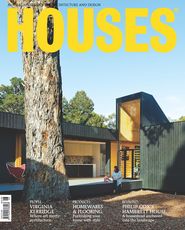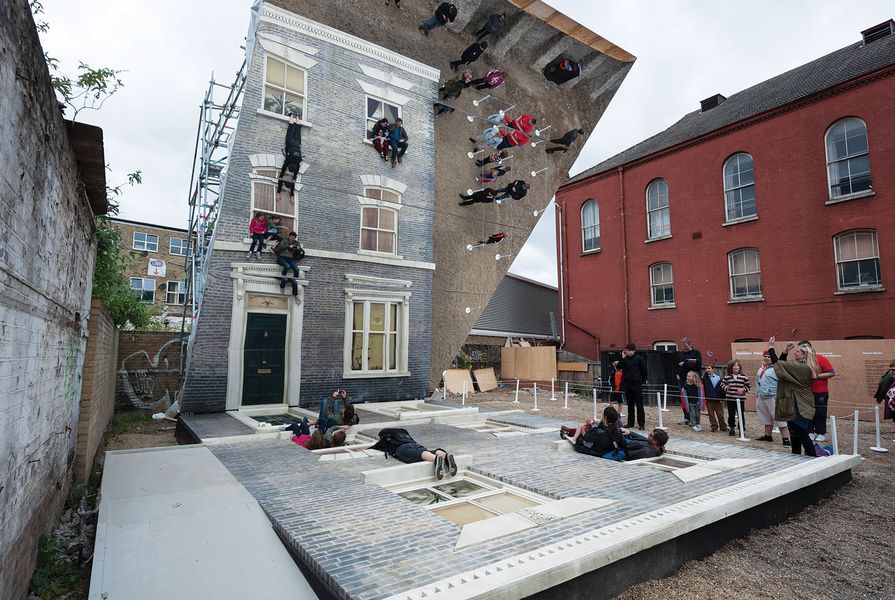The ever-rising cost of houses in London causes many aspiring owners to despair. Recently it seemed that some were literally driven up the wall, photographing themselves walking up the facade of a Victorian terrace house in east London.
As part of the London Festival of Architecture 2013, Argentinian artist Leandro Erlich designed and constructed a life-sized terrace house facade. Ten metres high and seven metres wide, the Dalston House facade was positioned flat on a disused, World War II bomb-damaged site. A rectangular mirror of similar size was suspended overhead, angled at forty-five degrees to the facade’s notional base. When people stood, walked, sat or reclined on this horizontal surface, their reflections in the mirror above created the illusion that they were standing on a real facade, walking up or down it, sitting on windowsills or clinging on by their fingernails.
Observers became inventive participants.
Image: Gar Powell-Evans, Courtesy Barbican Art Gallery
Observers quickly became inventive participants, exploring how Erlich’s exploitation of simple optics subverted reality. Some seemingly plummeted off the facade, others skateboarded across its vertical surface, and a man who proposed to his girlfriend while they sat on a windowsill was later photographed holding hands with his new fiancée as they each hung onto the door lintel with their free hand.
In earlier works by Erlich, participants appeared to be submerged under water but remained bone-dry (Swimming Pool, 1999), sat in an apartment that revolved like a fairground ride (Carousel, 2008), and strolled rather than fell down an old lift shaft, which had been rotated through ninety degrees (Elevator Shaft, 2011). Erlich acknowledges the inspiration provided by the surreally sinister aesthetics of film directors Alfred Hitchcock, Luis Buñuel, Roman Polanski and David Lynch, saying they “have used the everyday as a stage for creating a fictional world obtained through the psychological subversion of everyday spaces.”
“Scale the walls of a Victorian terraced house without your feet ever leaving the ground,” read the promotional strapline for Dalston House. By revealing how his illusion worked in a readily understandable manner, Erlich challenged his earthbound participants’ spatial perception without any deceit. By turning an ordinary situation into a playful experience he presented an alternative means of exploring domestic architecture. By working with local nineteenth-century vernacular design he also questioned the role of architecture in a rapidly gentrifying east London community.
Source

Discussion
Published online: 20 Feb 2014
Words:
Colin Martin
Images:
Gar Powell-Evans, Courtesy Barbican Art Gallery
Issue
Houses, December 2013


















